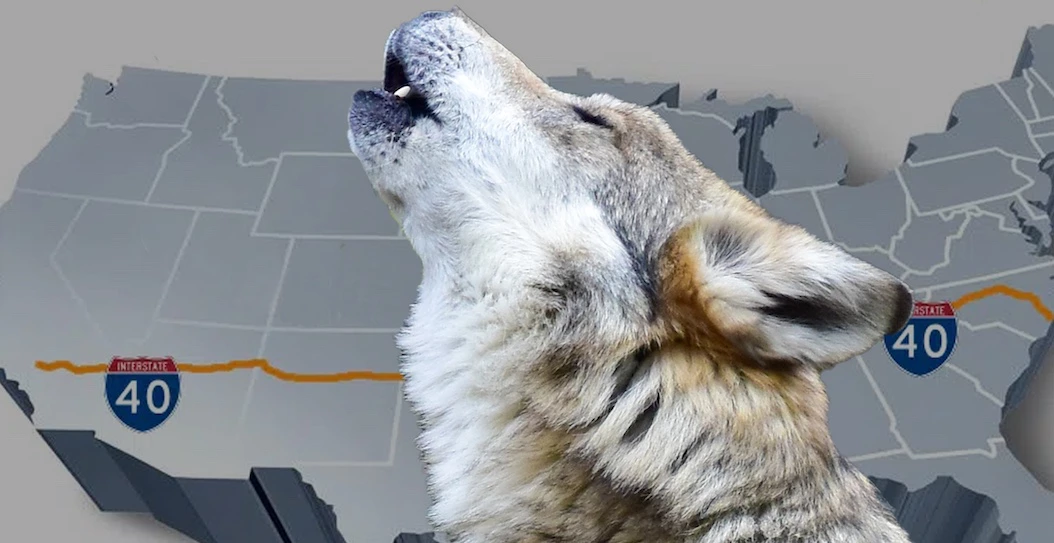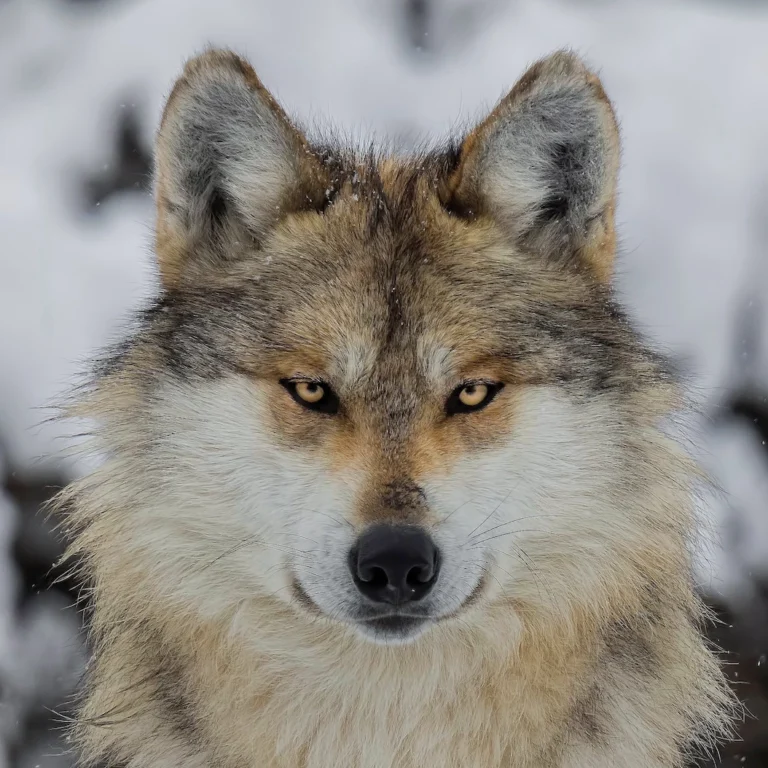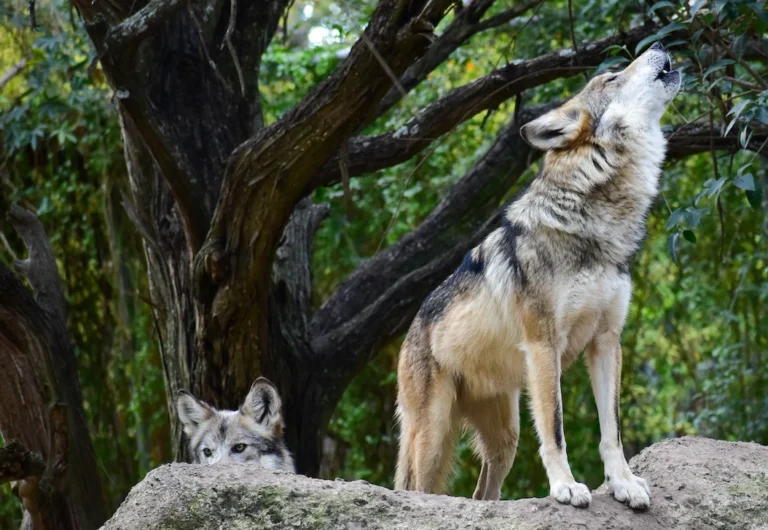
Superstition, Politics, and Junk Science Threaten Mexican Wolves
The ‘Great News’ about lobo recovery isn’t that great
By Ted Williams
The Mexican wolf (“El lobo”), native to Mexico and America’s Southwest, is the most genetically distinct, most imperiled, and smallest subspecies of gray wolf. A big male might weigh 80 pounds.
Humans nearly succeeded in wiping lobos off the planet. All alive today are descended from just seven known survivors.
Lobos were listed as endangered in 1976. A recovery team was formed three years later. Four males and a pregnant female were captured in Mexico. Two more were found in captivity.
To hear it from the U.S. Fish and Wildlife Service (USFWS) and the Arizona and New Mexico game and fish departments, recovery has been a stunning success. And they report that the expected genetic bottleneck hasn’t shown up. The lobos do appear fit.
The media is no less sanguine, gushing about what appears to be rare good news about wildlife.
In 2024, 27 pups were cross-fostered, meaning captive-bred pups were placed in dens to be raised by wild wolves.
As of late January 2025, there were 286 wild lobos in Arizona and New Mexico, the ninth straight year of population growth. There are 16 breeding pairs in New Mexico and 10 in Arizona. An additional 350 are maintained in captivity.
All this is indeed stunning, considering that managers originally had only seven lobos to work with. But it doesn’t follow that recovery has been a stunning success.
The Artificial Boundary
A look into the history of the recovery effort reveals disquieting details. Carnivore biologist David Parsons, currently of The Rewilding Institute, led lobo recovery for the USFWS from 1990-1999. He served also on the 2010 recovery team, which sought to revise the original 1982 plan. I asked him if we should be doing anything differently.
“We’re not paying attention to the ‘best available science’ required by the Endangered Species Act [ESA],” he replied. “This artificial boundary [Interstate 40 that slices off the top third of Arizona and New Mexico] precludes expansion and future expansion north of I-40. The Fish and Wildlife Service wrote itself a permit to capture and return any wolf that crosses this boundary. The states originally didn’t want any wolves. Now they want a lid of three hundred and twenty. That’s not recovery. It’s a wild zoo.”
South of I-40 lobos, are classified as a non-essential, experimental population, meaning it’s fine to kill them if, for example, they depredate livestock after hazing fails. When they move north of I-40, they acquire more protection because they lose their non-essential, experimental status and become endangered.
Still, they’re being shot on both sides of the artificial boundary. Every two weeks Greta Anderson, deputy director of Western Watersheds Project, checks a USFWS map showing the approximate locations of lobos. “I compare it to the previous map,” she says, “and we’re constantly losing wolves.”
Still, they’re being shot on both sides of the artificial boundary. Every two weeks Greta Anderson, deputy director of Western Watersheds Project, checks a USFWS map showing the approximate locations of lobos. “I compare it to the previous map,” she says, “and we’re constantly losing wolves.”

That’s largely because fear and loathing of wolves persists, especially in Arizona and New Mexico. On April 3, 2025, the Catron County Commissioners held a hearing about what they call New Mexico’s “wolf problem.” They contend it’s a “natural disaster.” Under New Mexico law, counties can get state funds to compensate them for natural disasters. So the commissioners are trying to shake down Gov. Michelle Lujan Grisham for “relief” money.
“We are scared,” Catron County commissioner Audrey McQueen told Outdoor Life magazine. “We’ve had deputies posted at the school this year so our kids can go out and play.” Brittany spaniels are more dangerous to kids than lobos. There’s no record of a lobo even attempting to bite a human.
“They [the Catron County Commissioners] have been declaring emergencies about wolves since 2006 when there were only a couple dozen wolves on the ground,” reports Anderson.
Recovery Plans Past and Present
In 2010 the USFWS convened a recovery team to update the woefully inadequate 1982 plan. Parsons calls the resulting 286-page draft document “state of the art, the classic model of what’s required under the ESA.”
Independent scientists, not beholden to any state or federal agency, were appointed to determine the best available science that would recover lobos to the point they could be delisted. Stakeholders — ranchers, outfitters, hunters, and wildlife advocates — were appointed to parse out how to deal with various issues such as livestock depredation.
This plan called for three U.S. interconnected subpopulations, one south of I-40 in Arizona and New Mexico and two north of I-40 — the Grand Canyon Ecoregion and the southern Rockies and northern New Mexico. Each subpopulation would have no fewer than 200 lobos. And the metapopulation of all three would sustain at least 750.
“The ‘Three Rs’ of conservation biology are Resilience, Redundance and Representation,” says Anderson. “If something happens to one population, there are enough animals left in others to save the species or subspecies.” The original recovery plan had the Three Rs in spades.
All recovery team members swore to keep the draft confidential, promising to release no detail until final publication. But when some stakeholders heard the 750-wolf figure, they threw a hissy fit. A representative from the Arizona Cattle Growers Association vowed that the numbers would beat him back to Phoenix. They did.
Orrin Hatch, then a U.S. senator for Utah, dashed off an op-ed excoriating the plan. It all blew up in the media. The USFWS ran for cover.
“Members of the recovery team, including state representatives from Utah Division of Wildlife Resources, who facilitated these breaches of confidentiality, did so with the apparent aim of applying inappropriate political pressure on the recovery criteria development process,” reported Jeff Ruch of Public Employees for Environmental Responsibility.
The USFWS replaced the independent scientists and the rest of the recovery team with state and federal personnel. Meetings were closed-door and primarily for state Game and Fish bureaucrats who wanted fewer wolves.
The new recovery plan hatched in 2017 called for about 320 wolves in the one U.S. subpopulation south of I-40 and for 200 wolves in Mexico.
“We support recovery in Mexico,” declares Anderson. “But the ESA requires recovery in the U.S., too. In 2023 Colorado reintroduced northern gray wolves to the southern part of the state. They could have been Mexican wolves. That would have been a great opportunity.”
The imagined subpopulation of 200 lobos in Mexico is a fantasy. There’s scant public land, and ranchers still poison wolves. “Mexico is a death trap,” says Parsons. “About seventy-five wolves have been released there, but they don’t survive. Mexico can only account for a dozen at most. None are now radio-collared; all radio-collared lobos have died.”
Nothing has ever been accomplished for lobo recovery without lawsuits from the environmental community. That’s how the stillborn 2010 plan happened, and that’s how the 2017 plan got revised.
Of the 2017 plan, Parsons wrote: “It is deeply disappointing to have waited 35 years for a new plan that is fatally flawed in so many ways. The content of the plan was dictated primarily by state wildlife agencies known to be antithetical to meaningful recovery of Mexican wolves. High-value habitats suitable for wolf recovery in the United States have been excluded from consideration. And reliance on a foreign country, where the U.S. government has no authority, to achieve full recovery is fraught with risk for the long-term survival of our southwestern lobos.”
In 2018, Earthjustice, representing Parsons, Defenders of Wildlife, Center for Biological Diversity, Endangered Wolf Center, and the Wolf Conservation Center, filed a lawsuit in the U.S. District Court for Arizona challenging the 2017 plan and requesting an adequate replacement consistent with ESA requirements.
Three years later, the court ordered revisions that required the USFWS to address specific threats, such as illegal shootings, and to undertake site-specific management.
The revised plan, finalized in 2022, includes public education, methods for facilitating safe lobo road crossings, and actions to limit illegal killings. But the single U.S. subpopulation of about 320 wolves and the artificial I-40 boundary remain.
According to Parsons, the revisions don’t change much. “Mexican gray wolves remain at risk of extinction,” he says.
Cross-Fostering
The current practice of placing captive-bred pups in dens to be raised by wild parents would have been a great idea if lobos had half-decent genetic diversity. The trouble with cross-fostering is that it takes two years for pups to reach sexual maturity, and most die before that.
So the environmental community advocates the former practice of adult, family pack releases. “That’s the quickest way to ensure that genetically valuable wolves already in reproductive status get into the wild,” says Anderson. “As the wild population expands, the ability of a single cross-fostered wolf to influence genetic diversity on a broad scale diminishes. Cross-fostering is a tool in the toolbox, but it’s very slow and very labor-intensive. And some of the [parent] wolves are being used over and over again — basically the same genetic content going into the wild.”
Inbreeding defects take a long time to show up. For example, a wooly mammoth population persisted on Wrangel Island in the Arctic Ocean for at least 6,000 years after the species went extinct everywhere else. Finally, just 3,700 years ago, it winked out. The cause, evidenced by DNA analysis of frozen tissue, was chronic inbreeding.
“People currently in charge of Mexican wolf recovery will never have to face the consequences of inbreeding depression,” says Parsons.
Cross-fostering is popular with the USFWS and states because pups can be placed where lobos already exist. This way, the population is less likely to expand. Also, the states and feds imagine that captive-reared adults would have less fear of humans and therefore kill more livestock. But in the past, when well-bonded adult packs were released, nuisance behavior declined.
I asked Parsons if captive adults lose their fear of humans. “That’s not the way these wolves were raised,” he replied. “When I was running the program, we built a facility south of Albuquerque. It was completely off limits to the public. It had large enclosures. If our wolves saw a human, they’d run to the far end of the enclosure and hide behind bushes or rocks.”
Genetics
Why didn’t inbreeding depression show up in lobos? The answer is that the states and feds didn’t look in the right places — i.e., paws. Syndactyly (conjoined toe pads) is a symptom of severe inbreeding in wild and domestic canids. The wolves isolated on Lake Superior’s Isle Royale suffered from it. By 2017, only two animals remained. The following year, Wayne Pacelle, currently president of Animal Wellness Action and the Center for a Humane Economy, worked with U.S. Senator Gary Peters, D-Mich., and they prevailed on the National Park Service to import 19 mainland gray wolves, thereby relieving the genetic bottleneck.
In 2023 Anderson discovered, in a public-records request, that someone had seen conjoined toe pads in the carcass of a captive lobo released in Mexico. She immediately reported it to the USFWS, which started looking for syndactyly, finding it in at least three more wolves. There’s an off-record report of a fourth.
Independent geneticists argue that one reason inbreeding depression isn’t obvious in lobos is that cross-fostered pups and their surrogate parents are supplementally fed to ensure better survival and supposedly to reduce livestock depredation. This supplemental feeding, the geneticists submit, may be masking defects by allowing survival of unfit pups.
What about genetic swamping of lobos by northern gray wolves? The states profess that this is a reason to keep them south of I-40.
Anderson’s argument is precisely the opposite. Genetic swamping, she explains, can be limited by establishing lobo subpopulations north of I-40 in advance of northern gray wolf colonization.
Some genetic introgression will happen anyway, and in the lobo’s native range north of the artificial boundary it would be and was completely natural. Moreover, it’s likely to be beneficial. In fact, Parsons believes that a human-induced shot of northern gray-wolf genes, easily effected in captivity, is a prescription for long-term lobo health. “I think we’re looking at a Florida panther solution,” he says.
Florida panthers were grievously inbred until managers brought in a few Texas cougars. Before human development blocked wildlife corridors, gene transfer between the two subspecies was natural and ongoing.
White House Plays Politics with Wolves
On the eve of the 2020 election, Trump delisted gray wolves, other than lobos, a decision ruled illegal in 2022 in a U.S. District Court responding to legal challenges from Animal Wellness Action, Sierra Club, Center for Biological Diversity, and other groups in the animal welfare and conservation space.
In President Trump’s second go-around, he’s selected Brian Nesvik, former director of the Wyoming Game and Fish Department, to run the USFWS. Nesvik has repeatedly called for the emasculation of the ESA and has testified before Congress that grizzly bears should lose ESA protection “by whatever means is necessary.” He can be expected to apply the same mentality to all wolves, lobos included.
The DOGE’s chainsaw massacre of USFWS offices and personnel further jeopardizes lobo recovery.
“Trump is pushing out the feds,” says Parsons. “So recovery will be driven more by the states which have an interest in keeping the lobo population damped down.”
And this from Anderson: “Everything now is happening in a black box. Communication from the Fish and Wildlife Service has been muted. They aren’t talking to the media. They’re not putting out press releases. They used to report wolf numbers in March. They didn’t do that this year. Numbers came from Arizona and New Mexico. The Service is being silenced in a program it’s supposed to lead. They lost wildlife technicians in Trump’s February 14th purge. Western Watersheds Project was part of the suit that got them back. But the Supreme Court overturned that, so now they can be fired again. This program relies on lots of people in the field to monitor wolves, haze them from livestock, and cross-foster pups.”
Communication from the Fish and Wildlife Service has been muted. They aren’t talking to the media. They’re not putting out press releases. They used to report wolf numbers in March. They didn’t do that this year. Numbers came from Arizona and New Mexico. The Service is being silenced in a program it’s supposed to lead. They lost wildlife technicians in Trump’s February 14th purge. Western Watersheds Project was part of the suit that got them back. But the Supreme Court overturned that, so now they can be fired again.
— Greta Anderson, deputy director of Western Watersheds Project

What’s more, Trump is attempting to redefine the word “harm” as it appears in the ESA, proclaiming that destroying habitat no longer meets the ESA’s definition of harm to listed species. In other words, it would still be illegal to shoot lobos, but no problem wiping them out by replacing their habitat with shopping malls, housing developments, golf courses, and oil rigs.
On April 7, 2025, Time magazine ran a piece claiming that Colossal Biosciences had, with “deft genetic engineering and ancient, preserved DNA, rewritten the genetic code of the common gray wolf to match” that of the extinct dire wolf, thereby “de-extincting a line of beasts whose live gene pool long ago vanished.”
Colossal Biosciences did nothing of the sort. It created gray wolves with a few genes that provide a few characteristics of a species more closely related to jackals than wolves.
But the Trump administration quickly seized on Time’s bogus report as a means of avoiding ESA inconveniences. Interior Secretary Doug Burgum lauded the alleged “de-extinction” as a way of changing “how we think about species conservation.” He met with Colossal Biosciences about using its techniques for low-cost, post-extinction recovery. Then on April 10, in a live-streamed town hall for Interior Department personnel, he declared: “If we’re going to be in anguish about losing a species, now we have an opportunity to bring them back. Pick your favorite species and call up Colossal.”
The push to motivate the feds and states to recover lobos instead of just maintaining some in the wild may become moot if the Republican-controlled Congress attaches to a successful bill a rider that removes federal protection from all wolves and nixes judicial review — i.e., by including language blocking courts from again ordering ESA protection.
A riderless bill may do precisely that — the “Pet and Livestock Protection Act” — was introduced January 31, 2025, by Reps. Lauren Boebert, R-Colo., and Tom Tiffany, R-Wisc. It would abolish all ESA protections for “the gray wolf” while preventing judicial review. Current “protective listings,” writes Boebert, are the work of “leftists [who] cower to radical environmentalists.”
Her bill squeaked by in the House in 2024, passing 209-205 but died in the Senate, which was then controlled by Democrats. The Democrats lost the Senate but picked up a few seats, so her bill’s passage in the 119th Congress is far from assured. While her bill doesn’t specifically mention “lobos” or “Mexican wolves,” they’re a gray wolf subspecies. Her bill could apply to them.
The bill passed the House Natural Resources Committee on April 9 and now awaits action in the House.
On July 1, Rep. Paul Gosar (R-AZ) introduced The Enhancing Safety for Animals Act — a bill specifically to delist Mexican wolves. At this writing, it has 10 Republican co-sponsors.
Ted Williams, a former information officer for the Massachusetts Division of Fisheries and Wildlife and a lifelong hunter and angler, writes exclusively about fish and wildlife.